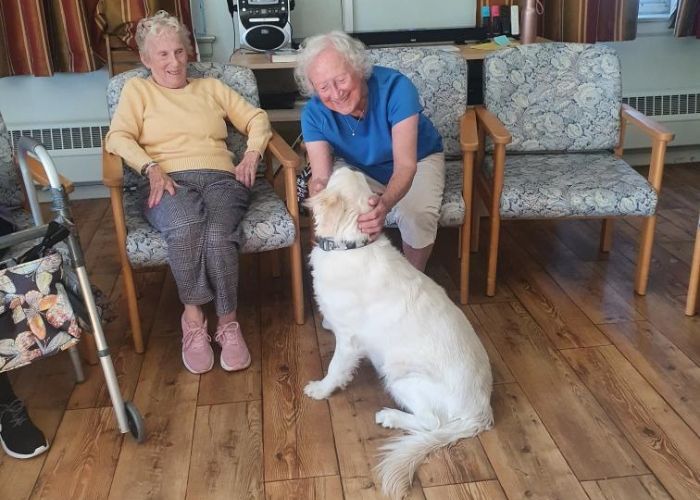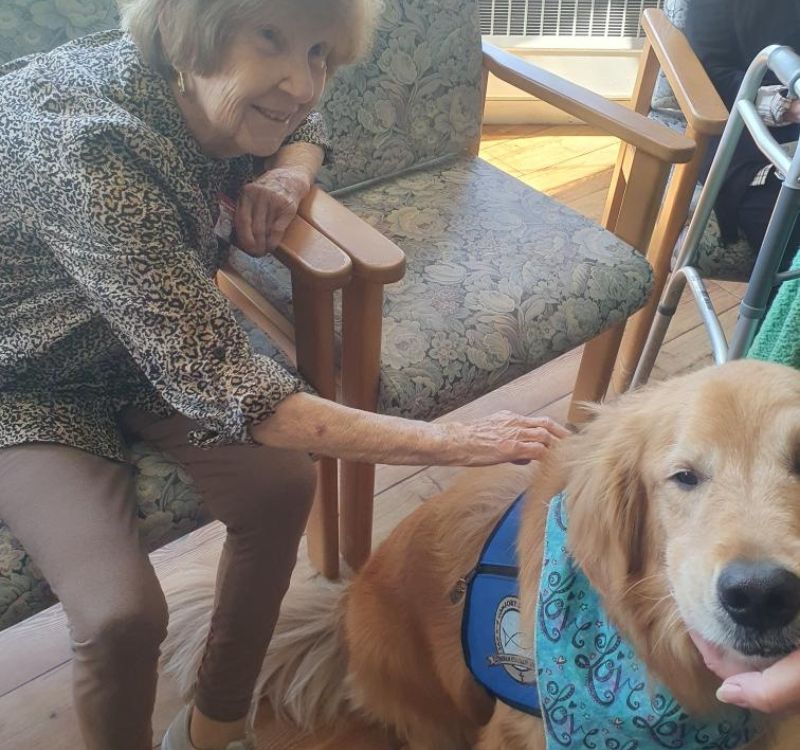Animals and pets provide a source of joy, unconditional love, and a sense of purpose for so many of us. Whether you are a pet owner or have regular visits from them, the camaraderie and entertainment animals can provide are tremendous. They can also play a therapeutic role, particularly for older adults. Animal-assisted therapy (AAT) has emerged as an effective method of improving physical and emotional health with various recreational and visitation programs. The benefits of animal therapy vary, especially for seniors living at home or in an assisted living facility like Plattduetsche Home Society.
What are the Benefits of Animal Therapy?
While different types of animals are used in AAT, dogs tend to be the most common therapy animal. Let’s take a look at some of the ways they make such a positive impact:
1. Improves Mood and Reduces Depression

The therapeutic influence of animals on human emotions is well-documented. A study featured in the journal Anthrozoos examined the impact of dog-assisted therapy on patients with dementia living in residential care. Over 11 weeks, the patients demonstrated notable improvements in their depression scores compared to those who received “human-only” therapy.
Interacting with an animal can stimulate the production of serotonin, the ‘feel-good’ hormone, leading to enhanced moods and an overall more positive outlook.
2. Boosts Physical Activity
From walking or playing with your dog to planned physical interaction visits at an assisted living facility, dogs will help keep you active. This benefits cardiovascular health and overall fitness, especially for seniors who may otherwise lead relatively sedentary lifestyles. Providing a reason to stay physically engaged is another one of the valuable benefits of animal therapy.
3. Promotes Social Interaction
The presence of animals often stimulates conversations and social interactions among retirees and seniors, particularly in communal living environments. This increased interaction helps combat feelings of isolation and loneliness, which are common issues among older adults.
Seniors can foster stronger social connections and community bonds by sharing experiences and stories about their animal companions.
4. Lowers Stress Levels

Numerous studies have indicated that interacting with animals can lower cortisol levels, the stress hormone, and increase the production of oxytocin, a hormone associated with bonding and relaxation. Petting an animal can even induce a calming effect, relieving stress and promoting calmness almost instantly.
5. Improves Cognitive Functioning
Engaging with animals can stimulate mental activity and contribute to improved cognitive functioning. The need to remember feeding times, pet names, and habits can be an enjoyable form of cognitive exercise. Moreover, the animal’s actions and behaviors can spark curiosity and a sense of wonder, encouraging seniors to stay mentally active and alert. For individuals with dementia or Alzheimer’s, interacting with animals has been found to elicit positive memories and responses, reducing agitation and improving overall mental health.
Unconditional Love Boosts Everyone’s Morale
Animals offer a form of closeness that is non-judgmental and unconditional. The bonds that are made are instantaneous and everlasting. This unwavering affection can boost self-esteem and give people a sense of purpose. For these reasons and more, animal therapy has proven its ability to inspire and heal.
If you want to learn more about animal therapy, many resources are available online and in your community. You can also inquire with the staff at your assisted living facility about arranging for visits from pet-assisted therapy organizations like North Shore Animal League America.



